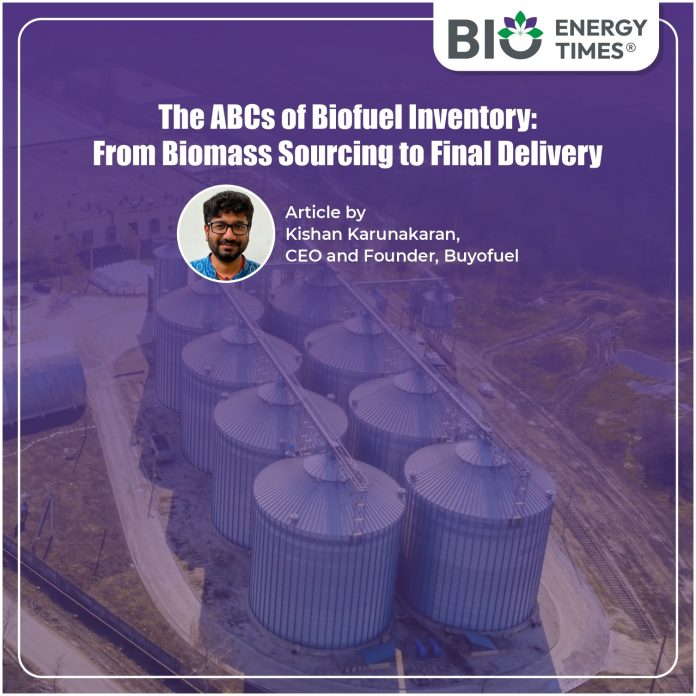As the world accelerates its transition toward cleaner energy, biofuels are gaining prominence as a viable alternative to fossil fuels. Yet, behind every litre of biodiesel or bioethanol lies a well-organized supply chain ,one that starts with sourcing biomass and ends with delivering the finished product. Understanding this biofuel inventory journey is crucial for ensuring environmental impact, regulatory compliance, and economic efficiency.
Acquiring Biomass
The journey begins with sourcing the raw material: biomass. This can include a wide variety of organic materials such as agricultural residues (rice husk, corn stover), energy crops (sugarcane, jatropha), Used Cooking Oil (UCO), or even municipal organic waste.
A sustainable inventory starts with traceability. Identifying where the biomass comes from, its quality, and how it’s harvested helps in:
Maintaining consistent fuel quality
Avoiding deforestation or land-use change
Ensuring compliance with carbon credit standards like Verra or Gold Standard
Sourcing agreements with farmers, food processors, or restaurants help build a steady and ethical biomass supply chain, which is key to uninterrupted production.
Biofuel Production and Blending
Once sourced, the biomass undergoes processing, via transesterification (for biodiesel), fermentation (for ethanol), or gasification (for syngas and advanced fuels).
At this stage, inventory management means:
Tracking input-output ratios
Recording batch-wise production data
Managing co-products like glycerin or digestate
Automation, such as through bioprocessors, enhances consistency and reduces human error. Additionally, quality control becomes critical, especially when blending biofuels with traditional fuels to meet regulatory norms (e.g., B5, B20 blends).
Blending must be monitored under tight inventory controls to ensure each batch meets ASTM or EN standards, and to prevent adulteration.
Compliance, Certification, and Carbon Accounting
Biofuel inventory is more than just physical tracking, it requires careful documentation to comply with national regulations and international sustainability standards.
Key inventory checkpoints include:
Feedstock documentation (especially for waste-based feedstocks like UCO)
Chain of custody records
Mass balance approach to link feedstock inputs with fuel outputs
Certification bodies often require such inventory logs to verify that biofuels are indeed low-carbon and non-food competing. Moreover, accurate inventory tracking enables businesses to claim carbon credits or tax benefits under government schemes.
Distribution and Final Delivery
The final leg of the inventory chain is fuel logistics and delivery. Whether it’s transporting biodiesel to fleet operators or supplying ethanol to fuel stations, biofuel inventory must track:
Mode of transport (tankers, barrels, pipelines)
Losses during transit
Storage conditions (as biofuels are hygroscopic and degrade faster)
Digital tracking tools and IoT sensors are now being adopted to ensure real-time visibility across the supply chain. This enhances customer trust and regulatory confidence.
The biofuel sector is not just about producing alternative fuels , it’s about managing a transparent, traceable, and efficient inventory system from field to fuel tank. By mastering the ABCs of biofuel inventory – from Acquiring biomass, through Blending and compliance, to Carbon tracking and Delivery, producers and suppliers can play a transformative role in reshaping the energy landscape, one sustainable drop at a time.
Kishan Karunakaran is the CEO and founder of Buyofuel.














